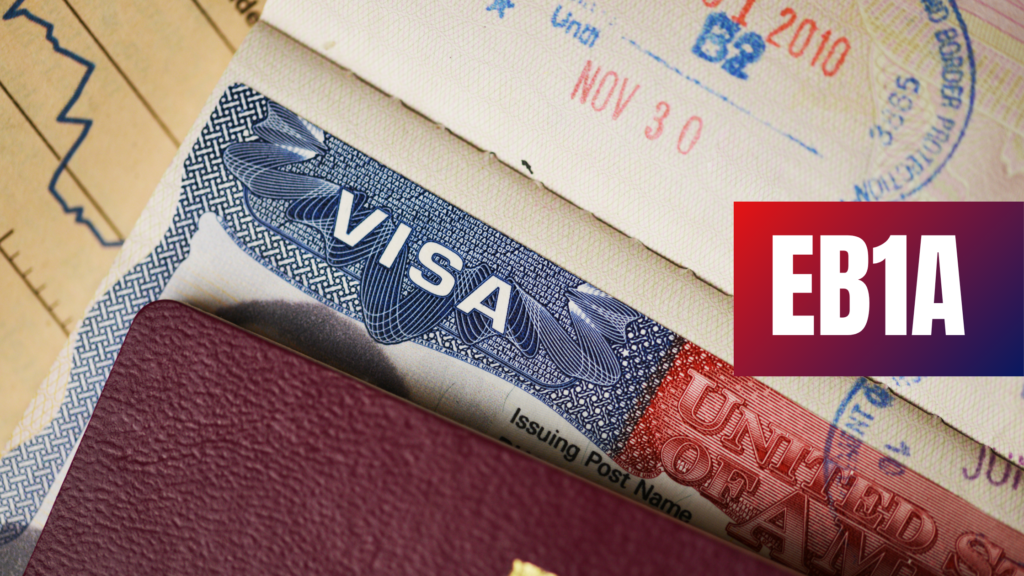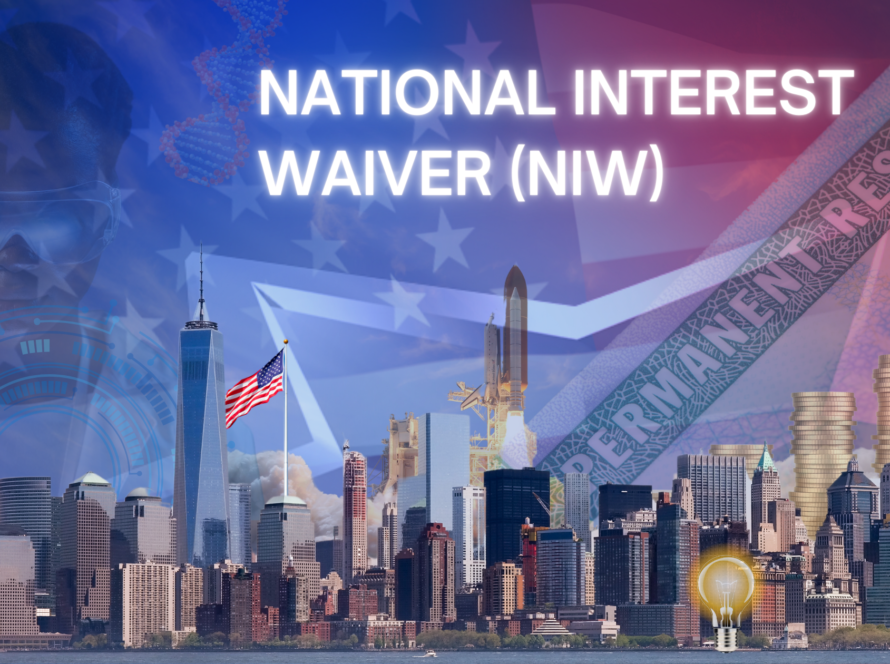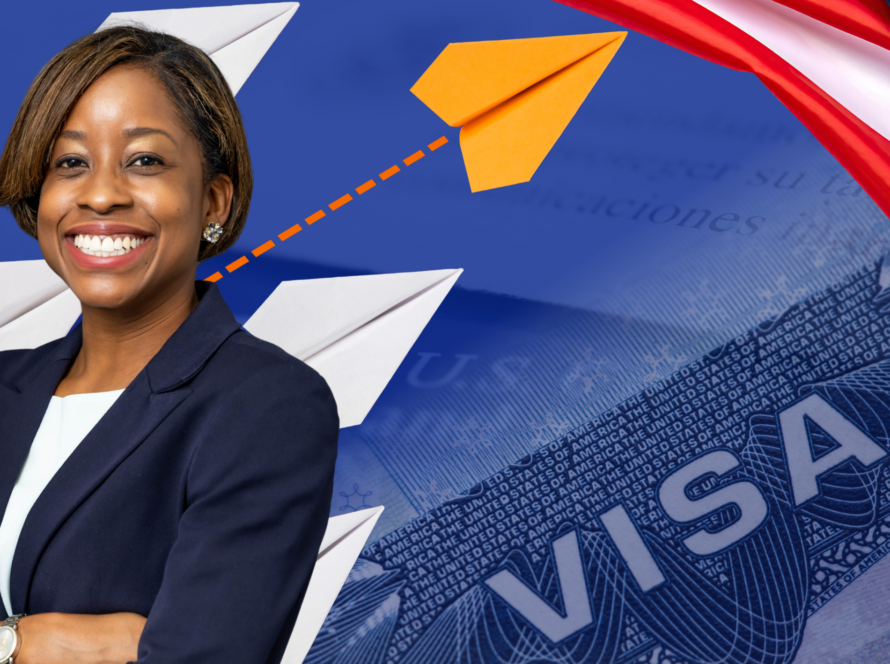
If you have exceptional talent and recognition in your field, the EB1A visa could be your fastest route to a U.S. green card.
Unlike most employment-based categories, the EB1A doesn’t require a job offer, employer sponsorship, or labor certification. You can apply on your own through a process called self-petitioning.
To qualify, you must demonstrate extraordinary ability and a record of sustained national or international acclaim. This category is designed for top-tier professionals: highly cited researchers, award-winning experts, individuals featured in major media, or leaders who’ve held influential roles in respected organizations.
Eligibility Criteria (Extraordinary Ability Requirements)
To meet the eb1a visa requirements, you need to prove your extraordinary ability in one of two ways:
Option 1: A One-Time Major International Award
If you’ve received a major award of global recognition, you’re already on track. But you must also prove you’ll continue working in your field after moving to the U.S. That shows your accomplishments are ongoing, not just one-time.
Option 2: Meet at Least Three of These Ten Criteria
No Nobel Prize or Olympic gold? That’s okay. You don’t need one to qualify. USCIS has a list of ten other ways you can prove your extraordinary ability.
If you meet at least three of those criteria and show that you’ll keep working in your field, you could still be eligible for the EB1A visa.
Let’s go through them one by one (with examples to help you spot what fits):
1. National or International Awards for Excellence
Even if it’s not a Nobel, other notable prizes still count — think competitive industry awards, innovation challenges, or professional honors. Include award certificates, press mentions, and anything that proves you earned it.
2. Membership in Exclusive Organizations
Are you part of an association that only admits top performers? For example, a scientific fellowship that requires peer nomination or achievements? That’s great. Just make sure it’s not a general membership anyone can buy.
3. Published Material About You
Have magazines, newspapers, or websites written about you or your work? Those articles can help prove your impact. Provide links, scans, or clippings — especially if they appear in recognized media or journals.
4. Judging the Work of Others
If you’ve served as a peer reviewer for academic journals, judged competitions, or sat on thesis committees, that counts. It shows you’re trusted as an expert by other experts.
5. Original Contributions of Major Significance
Did you create something new? Research, inventions, innovations — that others widely use or cite? Evidence here might include patents, scholarly citations, or expert letters vouching for your work’s impact.
6. Authorship of Scholarly Articles
Have you published in respected journals or presented at top conferences? Provide full citations for your papers or articles. This applies to sciences, humanities, and even trade-specific publications.
7. Exhibitions or Artistic Showcases (for artists only)
If your work has been displayed in galleries, art shows, or exhibitions, that’s strong proof. Submit programs, invites, or photos showing your work in the spotlight.
8. Leading/Critical Role in Top Organizations
Were you a lead researcher, creative director, founding team member, or executive at a respected institution or startup? Show your job title, what your role involved, and how it contributed to success.
9. High Salary or Pay Compared to Others in Your Field
If you’re earning more than most of your peers, USCIS sees that as recognition of your value. Submit pay stubs, contracts, and salary surveys comparing your income with others in your field and region.
10. Commercial Success in Performing Arts (for performers only)Think sold-out shows, high ticket sales, music streams, or box-office revenue. Provide the numbers to back it up. This only applies to performing arts like acting, singing, music, etc.
Application Process (Forms, Documentation, Timeline)
Once you’ve confirmed that you meet the eb1a visa requirements, the next big step is preparing and submitting your petition to USCIS. Here’s a straightforward breakdown of what that process looks like, with practical tips to help you move through each stage confidently.
Step 1: Gather and Organize Your Evidence
Before you even touch the application forms, take time to pull together strong evidence that shows you’re truly at the top of your field. That includes documents like:
- Proof of awards and prizes
- Copies of your publications and media features
- Recommendation letters from independent experts
- Evidence of high salary, influential roles, or creative impact
The eb1a visa allows you to self-petition, so you’ll also need to write (or work with a lawyer to write) a compelling petition letter.
This letter should explain how you meet the eb1a visa requirements, walk through the evidence, and show how your work has earned you national or international recognition.
Recommendation letters are especially helpful. Make sure they come from respected professionals in your field who aren’t your family or close collaborators.
Step 2: File Form I-140
Once your documents are in place, file Form I-140 (Immigrant Petition for Alien Worker) with USCIS. This is where you formally apply under the “Extraordinary Ability” category. Don’t forget to:
- Check the box for Alen with extraordinary ability
- Pay the required filing fee
- Include all supporting documents (petition letter, resume, copies of degrees, etc.)
If you want things to move faster, you can also submit Form I-907 for Premium Processing, which guarantees a decision on your I-140 within 15 calendar days.
Many applicants choose this option, especially now that the eb1a visa category is seeing higher application volumes.
Step 3: Mailing and Processing Time
Mail your full application package to the correct USCIS service center (double-check the latest address on the USCIS website). After submission, you’ll receive a receipt notice confirming your case was accepted.
Processing times vary. Standard review can take anywhere from 6 to 10 months, depending on the workload at your service center. With Premium Processing, you’ll likely get a decision in just 15 days. But even with fast-tracking, USCIS may issue a Request for Evidence (RFE) if they want additional proof. So, always be ready to respond with strong, organized documents.
Step 4: Adjustment of Status or Consular Processing
Once your I-140 is approved, the next step depends on your location and visa availability. Good news for most countries: the EB-1 category is usually “Current” on the Visa Bulletin, meaning there’s no waiting list.
- If you’re already in the U.S., you can file Form I-485 to adjust your status (along with Form I-765 for a work permit and Form I-131 for travel).
- If you’re outside the U.S., you’ll go through consular processing at your nearest U.S. embassy or consulate.
Step 5: Timeline to Your Green Card
So how long does it all take? Generally, from start to finish, most EB1A visa cases take about 6 to 12 months to get an I-140 decision.
After that, add another 6 to 9 months for adjustment of status or consular processing. However, this timeline can vary depending on USCIS caseloads.In early 2025, USCIS reported a surge in EB-1 petitions, especially for the eb1a visa, leading to delays. That’s why many applicants now choose Premium Processing and keep a close eye on USCIS processing times online.
Building a Strong EB-1A Petition (Strategies and Tips)
Meeting the eb1a visa requirements is only half the battle — you also need to present your case in a way that’s clear, convincing, and professionally documented. Here’s how to build a winning petition.
1. Know the Criteria and Focus on Your Strengths
First, study the ten criteria we covered earlier. Which ones apply best to your achievements? Even though you only need to meet three, showing more — if you can back it up with solid evidence.
For example:
- A scientist might showcase peer-reviewed publications, citation numbers, and research awards.
- An artist could combine exhibition records, press coverage, and international recognition.
A smart strategy many applicants use is narrowing their field. Instead of claiming you’re a top expert in “engineering,” define your niche as “biomedical imaging in cancer diagnostics,” for instance. That makes it easier to prove you’re among the elite in that area.
2. Make Your Documents Easy to Follow
USCIS reviewers are thorough. So your application should be logically organized and easy to navigate.
- Use a cover letter or checklist that maps each piece of evidence to a specific criterion.
- Label everything clearly.
- Translate non-English documents and include a certificate of translation.
Independent, verifiable evidence works best. Think award announcements from trusted organizations, published articles, salary surveys, or press coverage.
Avoid relying only on your resume or internal work reports.
3. Get Strong, Targeted Recommendation Letters
Letters from independent experts can make or break an eb1a visa petition. Pick people who are well-known in your field but aren’t directly tied to your employment or family. Ideal recommenders include journal editors, academic peers, or industry leaders.
To make their job easier, give them:
- A summary of your accomplishments
- USCIS’s EB-1A criteria
- Examples of how your work meets specific requirements
Their letters should clearly spell out how you’ve influenced your field, changed practices, or created something of major significance.
4. Write a Clear, Compelling Petition Letter
Whether you write it yourself or work with an immigration attorney, your petition letter is your chance to tell your story. It should:
- Walk through each claimed criterion
- Explain the importance of your work (even to non-specialists)
- Tie your achievements to how they meet eb1a visa requirements
- Anticipate and address any weak areas (e.g. if your field has fewer awards, explain why)
The tone should be confident and evidence-based, and it should use USCIS’s own language when possible (like “sustained national or international acclaim”).
5. Stay Informed and Stay Organized
USCIS policies and interpretations can shift — so stay updated. For example, they now accept team-based awards and allow past achievements, not just current ones.
They can help avoid common mistakes, draft better letters, and respond to USCIS queries quickly and effectively.
Ready to Move Forward with Your EB1A Application?
You don’t have to figure it all out on your own. At My Green Card Story, we specialize in guiding EB1A applicants with expert, personalized support every step of the way.
Book your consultation today and take the next step with confidence.
For official guidelines and eligibility details, visit the USCIS website.
Let’s make Your EB2-NIW & EB1A journey a success! Stay connected with us! Follow My Green Card Story on all our socials for the latest updates, tips, and inspiring success stories. Got questions? We’re here to help!



